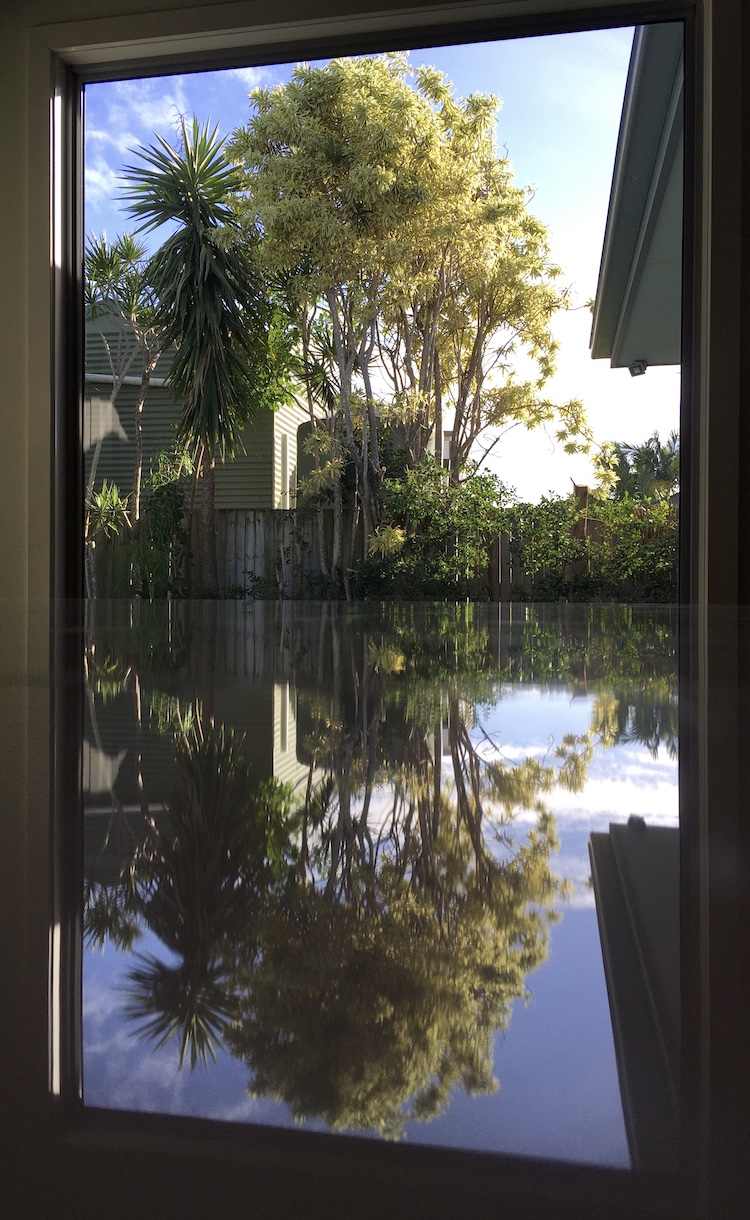
Greetings from the Gold Coast
– Karine Dupre from the Gold Coast, 02.06.2020
Tablescape from my living room, inside out.
Lady Palms and Lilli Pillis compete to attract lorikeets and silver orb spiders; blue sky and metal water tank in the background, and the mirroring that reminds of the surrounding ocean: this is a concentrate of Australia right at my window. We are still in isolation, inter-state borders closed and even though restrictions are being eased one by one, the city life has not yet taken over the streets. Cars are parked for three months now, and only the occasional trip to the shop disturbs the pile of leaves that slowly rises on their sides. Neighbours rediscover fences to build, walls to paint and trees to prune. At dusk, the silence is sound, only disturbed by the flaps of bats and the cackling of ibis.
The Gold Coast, famously known as ‘the Australian playground’, hibernates. The main attractions, themes parks and nightlife, are closed but the authorities have never forbidden access to the sixty-kilometre long beach and outdoor exercising. As a result, overseas and domestic visitors have disappeared, but local residents have rediscovered their natural surroundings, parks and green belt here, creeks there, and, before all, the beaches. As a regular week-end jogger, some places have never been so crowded!
But wait. Take away the usual strollers, the fishermen, the dog walkers, the fish-and-chips eaters, the couples, the kids, the loners and the true sport people, and one can discover something new in this coastal landscape. Tents have sprung, half hidden in the domesticated bush dunes. Some have dogs, some have not. Clothes hang on the tense string; sometimes there are thongs waiting for their feet.
Who are these people?
Are they a new type of tourist or homeless persons? As of today there is no data available on this topic (COVID is still on!), but regular visits to these tents confirmed the latter option. Sadly, this phenomenon is not new, as homelessness in Australia has increased 13.7% in 5 years. In the article by Nunan and Dupre, published in 2018, on ‘What the mapping of Byron Bay Shire’s informal settlement teaches us about having a home without having a house’, one can read that the country has a ‘tradition’ of informal settlements in the coastal bushlands. The question remains though, whether these neighbours are new rough sleepers or old ones that looked for a better place to live, when the usual city services and resources are shut down.
+
The article referred to in the text is the following: Nunan, V. and Dupré, K. (2018) What the mapping of Byron Bay Shire’s informal settlement teaches us about having a home without having a house, The Journal of Public Space, 3(1): 49-74, doi
POST(COVID)CARDS
